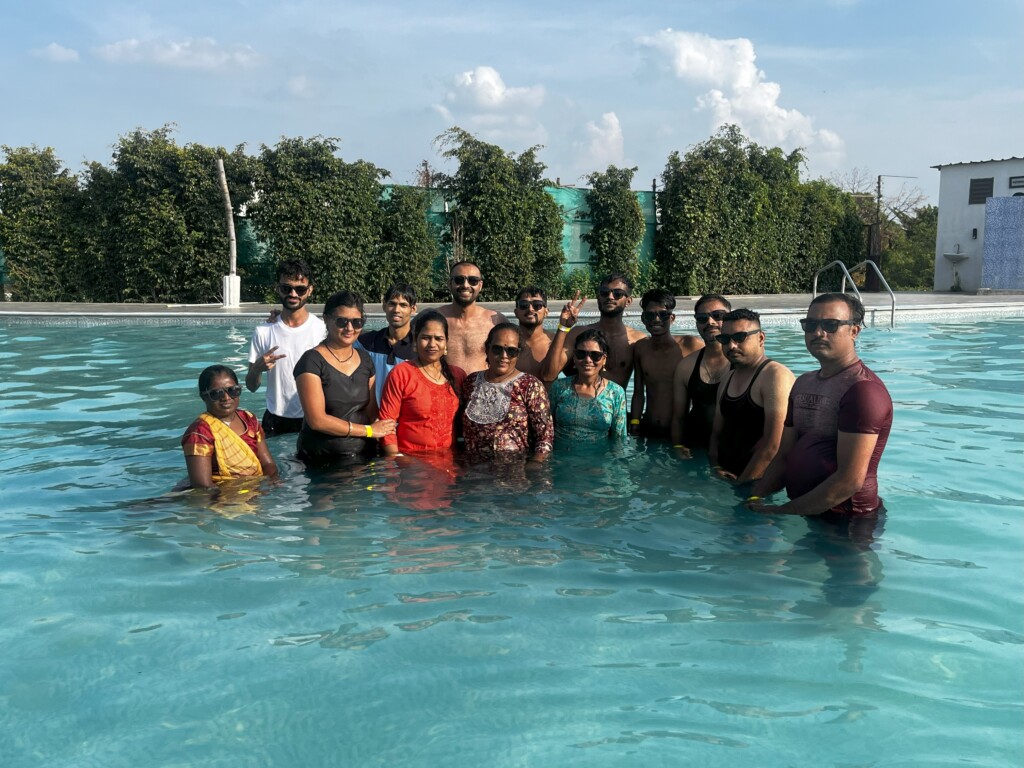Dear Friend of Ashaya and Without,
As the new year breaks, this is a story about a loss, and Ritu (Ritu is a pseudonym used to protect her privacy).
Ritu was 20 years old when she came to work with us. I looked at her hesitatingly – shouldn’t you be in college?
She looked at me and smiled, almost telepathically trying to convey to me that both her parents who were wastepickers were dead. Her younger sister is physically and mentally challenged, and her younger brother gets into all sorts of trouble. She said, someone in the house needs to earn, right Anish?
So, we hired her.
Her work was excellent, but she lived a little further away from the lab, so her commute was always an issue, with her relying on her brother or a friend.
We talked about getting her a bicycle with an interest-free loan – independence is generally a good thing. But she seemed reluctant, ruminating over the money versus the convenience. So that wavered.
Her work, on the other hand, thrived. She was learning and growing, both in skillset and confidence, and all of us were excited about her potential.
A few months into working with us, she got married – it seemed like a rebellious love story with a youthful exuberance fit enough to revive the flailing Indian cinemas.
But the new husband, mostly without malintent, started questioning her – do you really need to go to work? She apparently looked at him dead in the eye and said, I will never leave this job.
Today, she does not work with us. Yes, we lost.
A month or so after her wedding, Ritu didn’t show up to work. We tried calling her but couldn’t get through, and yes, we were a little worried. The next day – she didn’t show up either. So, we went to her tiny little home to see if everything was alright.
She lay on her bed almost alone, unable to communicate freely, with large bruises on her face, with her physically and mentally challenged sister looking over. Her husband wasn’t around. We suspected exactly what you are suspecting right now.
Ritu, who had health insurance provided by us, had discharged herself from the hospital after a supposed sonography and walked home alone.
What happened after all this is a sequence of events punctuated by the weaker parts of human nature.
We tried to figure out what was going on, but we didn’t seem to get consistent answers. Both the husband and the wife seemed to be saying different things. We were waiting on the sonography reports which never seemed to come.
A week or so passed and she still hadn’t come into work. So, we visited her again, and things turned sour.
We wanted to know if Ritu was going to come back to work or not, because based on everything we understood, she not only enjoyed working with us, but she also needed the money.
We probably tried too hard.
On this second visit, tempers flared and some unpleasant words were exchanged with the husband, who felt threatened, who felt that we were trying to control the situation, and that too in his home. Our good intentions were getting the better of us – we were giving the husband fuel to throw into the fire.
At this point, having tried twice, you would think we would stop, but the existential question in my head was – isn’t this the point of what we do? Not showing up to work for two weeks without a clear explanation is easy grounds for termination. But, the work we are trying to do is not ordinary. Ritu’s situation is not ordinary.
So, I decided that we try one last time – I along with the head of the wastepicker collective we work with would visit her and speak with her directly, asking her if she wanted to work with us, and how we could make that happen.
My colleague called her the evening before to inform her about this. But the husband picked up the phone instead. Words were exchanged, tempers flared again, and this time, the husband threatened violence.
And the husband did come to the lab the next day, with a posse of adolescents. But the threat seemed mostly empty.
The situation diffused quickly – they were as terrified as us, if not more. We felt like we were looking out for her. The husband felt like we were interfering. So, both parties decided that it was best to go our separate ways.
And that was that.
You’re probably wondering whether the husband physically abused her or not. He didn’t.
The bruises we saw were because she had gotten dizzy and fallen. Her sonography reports eventually came and turned out that she was pregnant. Her husband in his way was protecting her and probably thought that she should stay home, while he worked and earned for them.
Whether that’s right or wrong, who am I to say? But one thing is definitely true – he loves her.
There were mistakes made by both sides. We could have been more tactical in how we dealt with this. In some parallel universe where we did do that, Ritu would be working with us today.
But not in this one. In this, we lost.
And we learnt.
We learnt that our role in this fight allows us to make almost no mistakes. Because a mistake is like handing over rocks to the opponent to throw right back at you.
We learnt that the complexity of what we are trying to tackle means that we won’t ever fully understand the depths of the problem.
We learnt that there will be losses. Losses that just don’t make sense, that seem marinated in a weird gravy of perceived injustice and irrationality, poured over a mash of genuinely good intentions, in a plate made of silver.
—
Around all that, work has been relentless.
Our sunglasses (and jewellery) walked the ramp at Lakme Fashion Week in Delhi in a world almost diametrically opposite to the one I just spoke about. With Lady Irony chuckling at us in the background, one of the models adorned a dress weaved by Seema and Ritu (yes the same Ritu) from filament extracted from packets of chips.

It was a part of this competition held by R | Elan in tandem with the United Nations in India called “Circular Design Challenge” where we won first place (plus some money and a ton of press).
And there were many deeper wins there – we moved mountains to produce 3 new versions of sunglasses (sketch to mould to final manufacturing) and 4 types of jewellery designed in-house using 3D-printed moulds, all in less than 3 months.
Based on customer feedback, we have also upgraded our material and figured out how to coat it in a way that gives our frames a pristine finish while making them scratch-resistant, sweat-proof and food-grade – so yes, you can probably chew on them arms of our shades. Probably. But the coating does reduce the overall circularity of the product – let perfect not be the enemy of good, right?
But most definitely, these newest versions of our sunglasses are the best ones so far. We are relaunching them with an additional colour on a new-ish website super soon.
And it’s going to be Without. As in, the name Ashaya is going to be pushed more into the background as we build a parallel non-profit that drives the deeper realms of the impact we want to create.
When it comes to products and materials though, Without makes more sense. Even the next quarterly letter will come from [email protected] (quick, mark it as safe).
We also got a chance to attend and present at COP28, which believe it or not, seemed like a waste of time for us (partly my fault here). Yes, policy and advocacy matter, but my mind is currently focused on just building from the ground up.
At the same time as COP, we presented our tech at Plastivision, India’s arguably largest plastic manufacturing exhibition (hello again Lady Irony).
But the highlight of the quarter was our Diwali celebration. All of us spent a day out doing obstacle courses, rain dancing, frolicking in a fancy-ish pool, watching a (mediocre) puppet show and ziplining. For many of us, there were many firsts. It was clean, pure fun at the confluence of many worlds coming together, in a safe space where everyone could just be. Where everyone could dance freely and jump into the pool without the in-laws raising an eyebrow, or husbands dictating limitations. All united by the work we are trying to do and the problems we are trying to solve.

And we all missed Ritu.
Thanks for reading all the way through,
Anish
